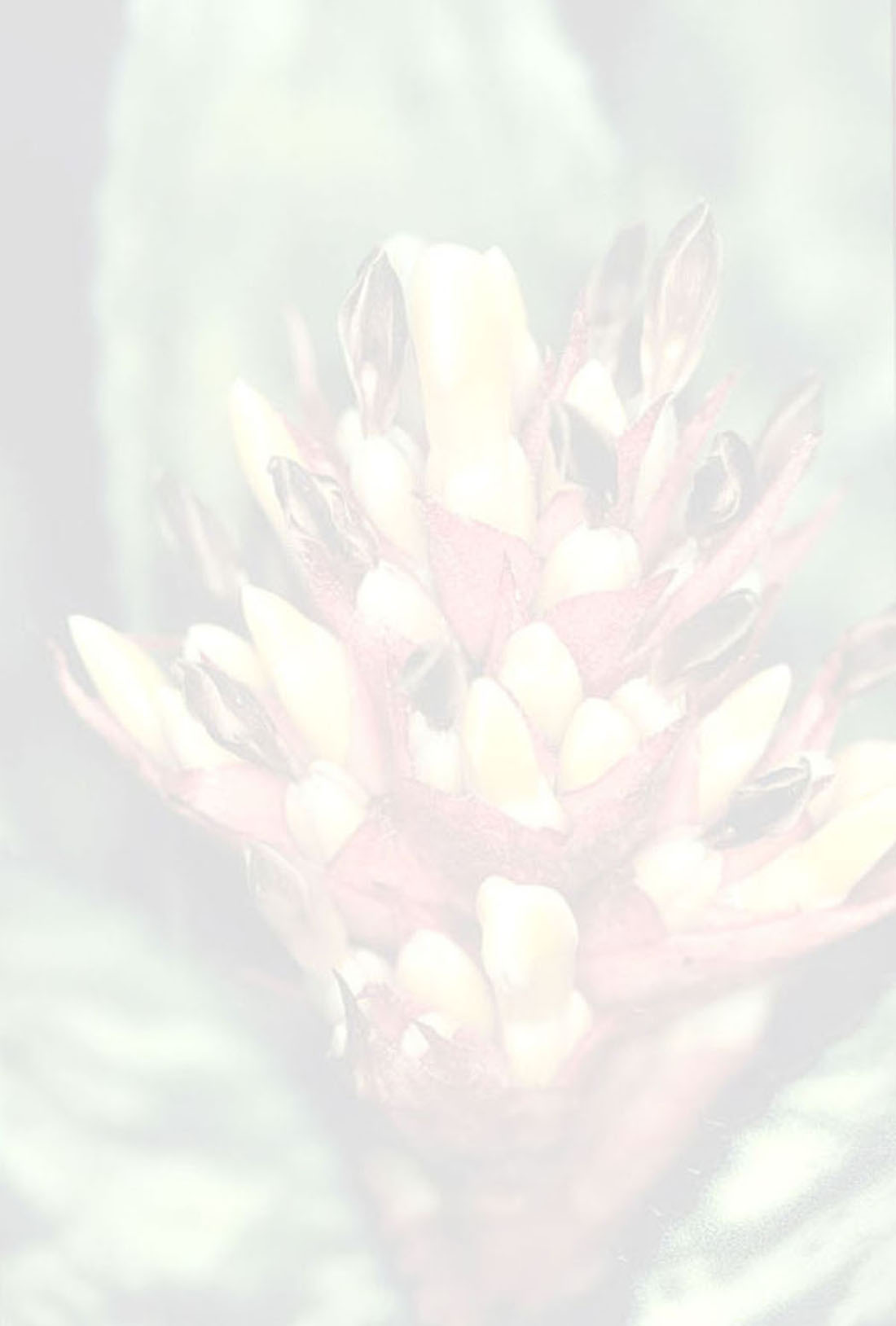

 Aechmea chlorophylla L.B.Sm.[as Aechmea chlorophylla L. B. Smith]
Aechmea chlorophylla L.B.Sm.[as Aechmea chlorophylla L. B. Smith]Observations: —Misnamed Bromeliads No.18: a Trio by Harry E. Luther in Journ Brom. Soc. 48(6):244-6. 1998
Most bromeliad growers, especially those living in warm climate areas where they can keep some of their collections outdoors, cultivate members of Aechmea subgenus Macrochordion (the "bromeliifolia group"). From my experience, many of these plants are misnamed in horticulture. With the exception of some very distinctive species such as A. triangularis (Syn.: A. kautskyana), most of these similar-appearing plants are identified as A. bromeliifolia. The latter species may be treated in a future instalment of this series; for now, I will discuss and illustrate three which I have found to be misidentified in horticulture and in herbaria.
Aechmea lamarchei Mez was described from a cultivated plant late last century. Recently verified specimens have been collected in the Brazilian State of Minas Gerais. The cultivated plants, probably introduced by M. B. Foster, most likely originated from there as well. Aechmea lamarchei is very distinctive as it has the longest flowers (more or less 30 mm long) of the group and large, conspicuous, rather papery floral bracts that exceed and conceal the 1/2 connate sepals. Plants commonly found in cultivation have long, coppery-green leaves and are usually quite caulescent. (Note by Butcher and confirmed by HEL. photos of A. chlorophylla in both Baensch and Venezuela book are in fact A. lamarchei !)
Aechmea chlorophylla L.B.Smith was collected by the Fosters in 1939 and 1940 from Espirito Santo and Minas Gerais States, and described in 1955. The cultivated stock of this species is likely from these collections. Compared to A. lamarchei the flowers of A. chlorophylla are shorter (more or less 25 mm long) and the thick floral bracts only about equal the ovary. The short-connate sepals are conspicuously exserted beyond the floral bracts. This species is nearly stemless or very short-caulescent. The leaves are green or grey-green.Edited from (02-12-2014): Smith & Downs 1979. Bromelioideae (Bromeliaceae) in Flora Neotropica.